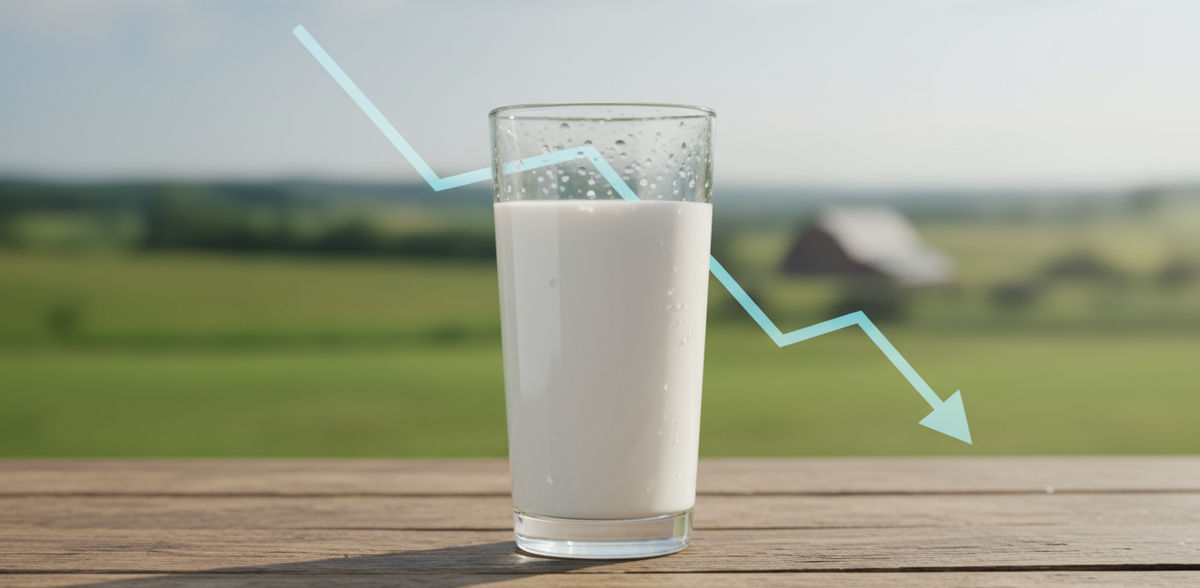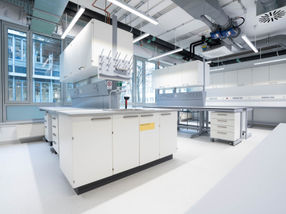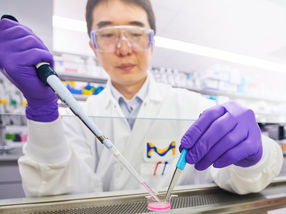German milk market - from high level to normal?
2025 was a good year, but also a difficult one
Advertisement
The two-day annual conference of the German Dairy Industry Association (MIV) in Berlin came to an end in close proximity to the Federal Chancellery, the center of German politics. In his keynote speech, the Federal Minister of Agriculture, Food and Home Affairs, Alois Rainer, emphasized the great importance of milk in the agricultural and food sector for our country. "The German dairy industry supplies us with delicious, valuable products every day, and German dairy products are also in great demand abroad. Successful business works when freedom is created and entrepreneurial activity is facilitated. I will continue to campaign for this - with reliability, predictability and an intelligent reduction in bureaucracy. We are also working on a modern agricultural export strategy to further strengthen the competitiveness of our domestic companies in international trade."
We are moving in the right direction
"To ensure that this sector remains strong in the future, we need "further reductions in bureaucracy, sensible and practical laws and regulations and fair and good conditions on the market", demanded MIV Chairman Detlef Latka, Hochwald Foods GmbH, and praised Federal Minister Alois Rainer for having started in the right direction. "We are excited and optimistic about how things will continue, especially with regard to the reduction of bureaucracy, EUDR and urgently needed planning security for investments."
2025 was a good year, but also a difficult one
MIV Chairman Detlef Latka was satisfied: "We have achieved amazing things in the first nine months or so. After the industry was throttled by bluetongue last year, we coped well with foot-and-mouth disease (FMD) at the beginning of this year. The MIV cooperated excellently with the ministry, which was still called the BMEL at the time, and often and quickly removed export barriers. That's why, and with a bit of luck, we got through this crisis so well."
Overall, the market situation was very good for dairies and milk producers this year. The cheese and butter markets in particular have supported the dairy industry so far.
The times of high levels are coming to an end
There are now increasing signs that the period of very high prices for dairy products is coming to an end. Milk production is increasing compared to the previous year, which was weaker due to bluetongue. In addition, milk is once again higher in fat than in the previous year. The euro is strong, the dollar is weak and butter imports in particular are pushing onto the European market, making sales difficult for the domestic industry. In addition, demand outside Germany for cheese, the strongest pillar of the dairy industry, is currently weaker.
"We have come from a high level and are now settling back down to normal, the situation is normalizing. The problem for milk processors: butter and cheese prices are already falling, but the milk price is still at a high level," said MIV Managing Director Dr. Björn Börgermann and called on all market participants to act sensibly in the changing situation.
Milk production is still changing
The number of milk producers has been falling for years to less than 48,000 and the number of dairy cows has also fallen by around 2.5% compared to the previous year (around 3,580 million). Germany therefore remains the most important country for milk production in Europe, despite the ongoing structural change.
In the first seven months of 2025, raw milk deliveries to German dairies were 1.8% below the previous year's level on a calendar-adjusted basis. Since August, they have been significantly higher than in the same weeks of the previous year, which were characterized by slumps due to the rampant bluetongue disease. At the same time, the milk price has been very high so far.
Milk price at a very high level
Germany has achieved an average milk price of around 53 cents/kg for conventional raw milk for the period from January to July 2025. For German milk producers, this means that the milk price for the 2025 calendar year, including additional payments, will be close to the record year of 2022 at 53.2 cents/kg. For the current year, the price for organic milk is expected to be around EUR 66/kg, which is higher than ever before.
Cheese remains in high demand for consumption
Per capita consumption in 2024 developed differently depending on the dairy product: consumption of drinking milk remained at the previous year's level (around 46 kg/capita), while cheese consumption rose to a record 25.4 kg/capita. Average butter consumption (5.5 kg), on the other hand, fell slightly, not least due to high prices, but less than expected. Organic milk and quark are increasing in sales to consumers.
Vegan alternatives
Demand for vegan alternatives in the food trade was inconsistent over the course of the year. While vegan drinks (+8.5%) and yogurt alternatives (+4.5%) were in greater demand on average over the year, demand for cheese alternatives slumped by almost 10%.
Situation on the international markets
The German dairy industry was able to slightly increase its foreign sales again last year to around EUR 11.8 billion. Cheese in particular was again in high demand for export this year, while the weak dollar was often an obstacle to a more successful export business. Butter has recently been quite "high-priced" in Germany and Europe compared to the rest of the world, but the situation on the global markets is currently easing.
The bottom line is that the dairy industry is a strong sector. Nevertheless, we are aware of the potential challenges that lie ahead. Together with the current federal government, we want to shape the framework for the future. We hope for fair and constructive cooperation so that the dairy industry remains the driving force in the food sector!
Note: This article has been translated using a computer system without human intervention. LUMITOS offers these automatic translations to present a wider range of current news. Since this article has been translated with automatic translation, it is possible that it contains errors in vocabulary, syntax or grammar. The original article in German can be found here.

























































